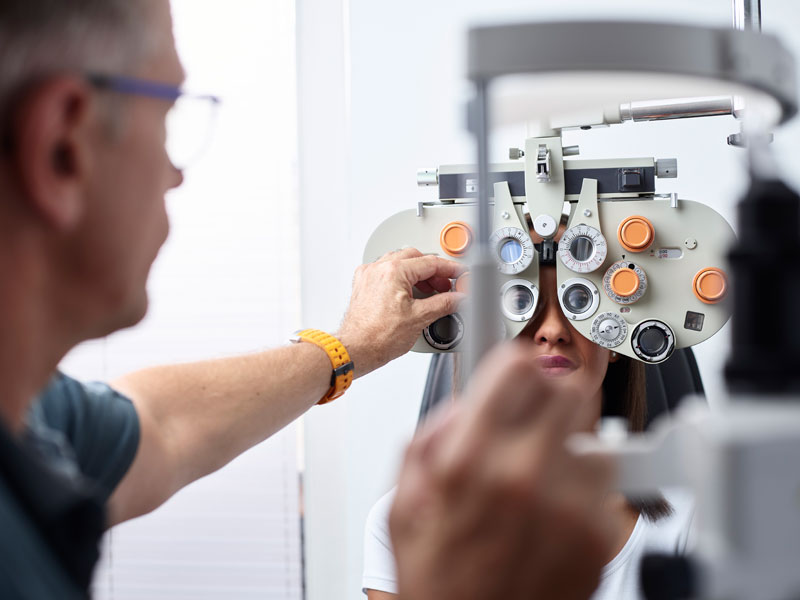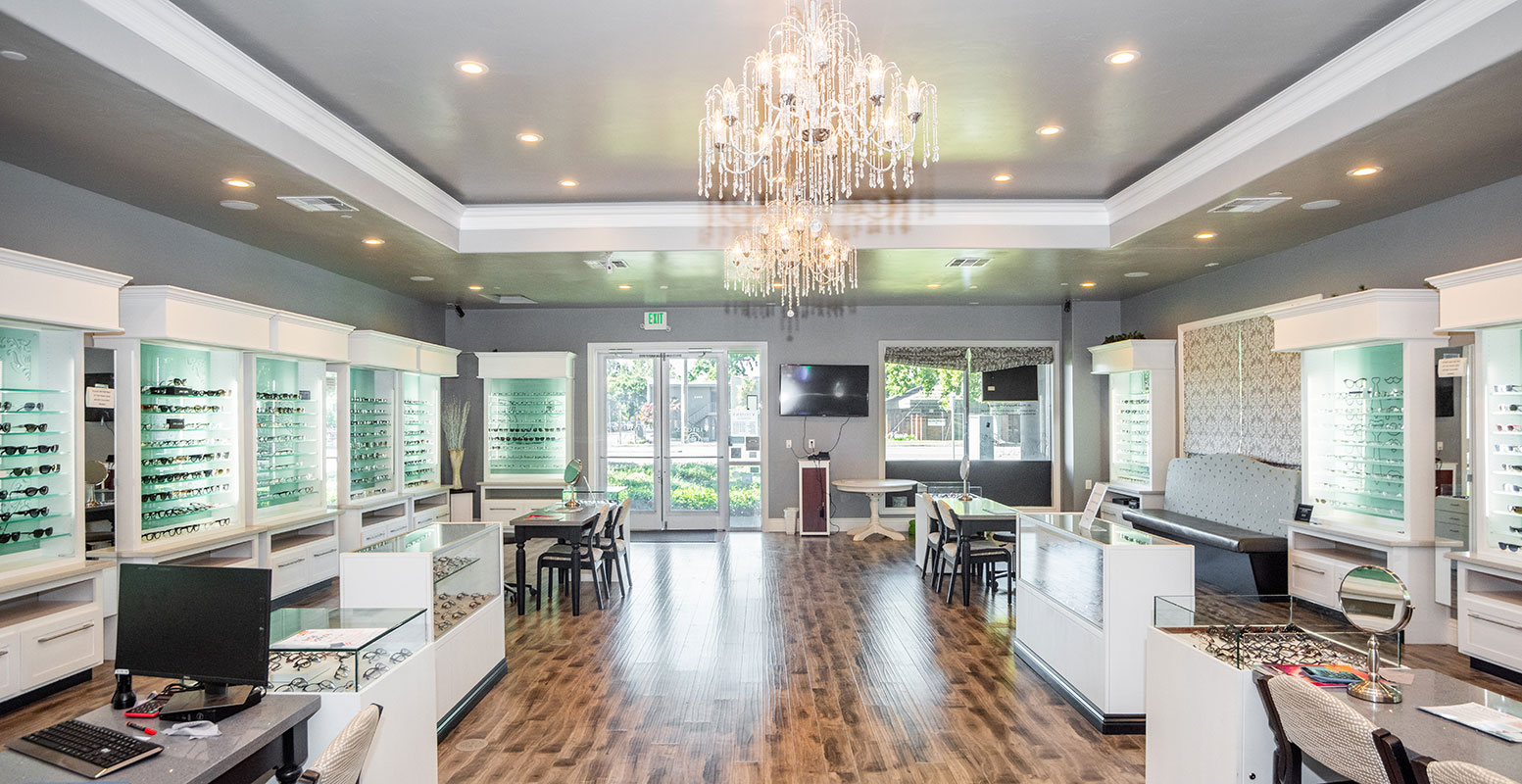Checking Out the most up to date Technical Innovations in Optometry and What They Mean for Optometrists
From the precision of Optical Comprehensibility Tomography to the nuanced understandings offered by AI-driven diagnostic devices, these developments are establishing brand-new standards in client analysis and therapy. As these innovations permeate the practice, optometrists are faced with the difficulty of accepting these devices to boost person outcomes.
Developments in Diagnostic Tools
Advancing the field of optometry, advancements in analysis tools have changed the means eye treatment specialists assess and diagnose aesthetic problems and eye problems. The past decade has seen substantial technical improvements, making it possible for even more detailed and precise examinations. Optical Coherence Tomography (OCT), as an example, offers high-resolution cross-sectional pictures of the retina, enabling the very early discovery of illness such as glaucoma and age-related macular degeneration. This non-invasive imaging technique has actually come to be vital in modern optometric method.
Another secret innovation is the introduction of innovative corneal topography systems, which map the surface curvature of the cornea with precision. These devices are particularly helpful for fitting get in touch with lenses and detecting corneal disorders. Moreover, electronic retinal imaging has transformed standard ophthalmoscopy, offering comprehensive, scenic sights of the retina that facilitate extensive aesthetic examinations.
The development of wavefront aberrometry has also been important, making it possible for the evaluation of refractive mistakes with unparalleled precision (Optometrist Chino). This technology assists in personalizing restorative lenses and improving surgical outcomes for refractive surgical treatments. Collectively, these diagnostic developments empower optometrists to deliver superior patient care, ensuring very early treatment and tailored treatment strategies, ultimately boosting aesthetic health and wellness results
AI in Individual Management
Structure on the structure of innovative diagnostic tools, the incorporation of artificial intelligence (AI) in patient administration stands for a transformative jump for optometry. AI systems are progressively utilized to enhance performance, precision, and personalization in patient treatment. By evaluating large quantities of data, AI can identify patterns and forecast prospective eye conditions, enabling eye doctors to tailor treatments much more effectively. This capacity is important in managing persistent eye diseases such as glaucoma and diabetic person retinopathy, where early discovery and constant surveillance are essential.
In addition, AI-driven platforms assist in structured client communications and management processes. Automated organizing, digital assessments, and individualized follow-up strategies not only enhance individual complete satisfaction yet also optimize time monitoring for specialists. These systems can triage patients based upon the necessity of their problems, ensuring that those in essential need get punctual focus.
Additionally, AI boosts decision-making by providing optometrists with evidence-based suggestions and therapy paths. By incorporating information from electronic health records, AI tools use understandings that educate professional decisions, decreasing the danger of errors and enhancing individual results. As AI proceeds to advance, its duty in person monitoring will likely expand, reshaping the landscape of optometric care.
Advances in Retinal Imaging
In the realm of optometry, retinal imaging has witnessed remarkable technical advancements that are enhancing analysis capacities and person treatment. Advancements such as Optical Comprehensibility Tomography (OCT) and fundus digital photography have transformed just how eye doctors envision and analyze the retina. OCT, in specific, supplies high-resolution, cross-sectional photos of the retina, enabling the in-depth assessment of its layers. This capability is important for early discovery have a peek at these guys and administration of conditions like glaucoma, diabetic retinopathy, and age-related macular deterioration.
Enhanced imaging methods like OCT angiography are further refining analysis precision. This non-invasive strategy maps blood flow my blog in the retina, offering critical understandings into vascular wellness without the need for color injections. Furthermore, adaptive optics innovation is being incorporated into retinal imaging systems to remedy ocular aberrations, providing unprecedented picture quality. Such developments promote the identification of min retinal adjustments that could symbolize disease progression.
In addition, developments in fabricated knowledge are augmenting retinal imaging by allowing automated analysis of big datasets. These systems aid eye doctors in recognizing patterns indicative of pathology, thus improving analysis precision and performance. Jointly, these technologies are changing retinal imaging right into a cornerstone of modern eye care, improving outcomes and expanding therapeutic possibilities.
Teleoptometry's Growing Role
Teleoptometry is progressively ending up being a crucial element of eye care, driven by developments in digital communication and diagnostic tools. As optometry welcomes electronic makeover, teleoptometry promotes remote appointments, permitting eye doctors to prolong their services beyond traditional borders. This is specifically valuable in rural and underserved areas where accessibility to specialized eye treatment is typically restricted. By leveraging high-resolution video conferencing and progressed retinal imaging, eye doctors can carry out extensive eye tests from afar, making certain timely diagnosis and treatment.
The integration of expert system (AI) further boosts teleoptometry, enabling the evaluation of visual information and helping in the discovery of ocular problems such as glaucoma and diabetic person retinopathy. AI-powered formulas can rapidly translate complex imaging information, providing eye doctors with valuable understandings that bolster scientific decision-making.
Furthermore, teleoptometry sustains connection of care via seamless combination with digital health documents (EHRs), allowing optometrists to keep comprehensive individual backgrounds. When seeking advice from with various specialists., this ensures that people obtain customized and constant treatment even.
In spite of these benefits, obstacles remain, including making sure information safety and security and handling individual assumptions. Teleoptometry stands for a substantial stride towards more accessible, efficient, and patient-centered eye care. As innovation advances, its duty is positioned to increase better.

Future Patterns in Eye Care
A myriad of innovative trends is additional resources readied to improve the future of eye treatment, driven by technological developments and the developing needs of patients. One significant fad is the assimilation of expert system (AI) in diagnostics, which guarantees to enhance the accuracy and performance of eye assessments. AI algorithms can analyze substantial quantities of data from retinal images, possibly finding conditions like diabetic retinopathy and glaucoma earlier than typical methods.
Additionally, customized medicine is gaining grip in optometry, with genetic screening notifying customized therapy plans. This approach intends to optimize person results by tailoring treatments to individual hereditary profiles. Wearable modern technology, such as smart call lenses, is likewise imminent, using real-time monitoring of intraocular stress or glucose degrees, thus giving constant understandings into systemic and ocular health and wellness.
The adoption of enhanced fact (AR) and online fact (VR) in training and individual education and learning is one more arising trend. These innovations offer immersive experiences that can improve understanding and abilities both for patients and optometrists. As these fads evolve, optometrists have to stay abreast of technological innovations to offer sophisticated care, guaranteeing enhanced person outcomes and fulfillment in the dynamic landscape of eye care.
Final Thought

Jointly, these diagnostic advancements encourage optometrists to deliver premium individual care, making certain very early intervention and customized treatment approaches, eventually improving aesthetic wellness outcomes.

As these innovations proceed to advance, optometrists should adjust and include them into practice, eventually maximizing operations efficiency and elevating the requirement of eye treatment supplied to people.